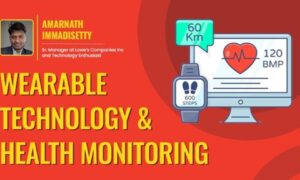Welcome to the future of workers’ compensation! We are living in an age where wearable technology is revolutionizing workplace safety. This innovative technology has the potential to reduce workplace injuries, increase productivity, and improve overall employee well-being. In this blog post, we will explore how wearable technology can prevent workplace injuries and what benefits it offers for both employees and employers alike. So fasten your seatbelt and get ready for a thrilling ride as we delve into the world of wearable tech in preventing workplace injuries!
Workplace Injuries are on the Rise
Workplace injuries are on the rise, and wearable technology may be the key to preventing them. Workers’ compensation costs have been rising for years, and employers are looking for ways to prevent injuries before they happen.
Wearable technology, such as fitness trackers, can help employers track employee activity and identify potential safety hazards. For example, if an employee is working in a warehouse and is constantly lifting heavy boxes, their fitness tracker could send an alert to their employer that they may be at risk for a back injury.
Fitness trackers can also be used to create safe workplace environments by tracking employee heart rates and stress levels. If an employee is working in a high-stress environment, their fitness tracker could send an alert to their employer that they need to take a break or adjust their work schedule.
Wearable technology is still in its infancy, but it has the potential to revolutionize the way we prevent workplace injuries. As more employers adopt these technologies, we will see a decrease in workplace injuries and workers’ compensation costs.
What is Wearable Technology?
Wearable technology, also known as wearables, is a category of electronic devices that can be worn by the user. These devices often have sensors and can communicate with other devices to exchange data. Wearables are becoming increasingly popular due to their small size and ease of use. They offer many potential benefits, including the ability to track fitness goals, monitor health status, and even provide safety features.
One area where wearables are beginning to have a major impact is in the workplace. Injuries sustained at work are a major problem for employers, resulting in lost productivity, high workers’ compensation costs, and even legal liability. By integrating wearable technology into the workplace, employers can help prevent injuries before they occur.
There are a number of different ways that wearable technology can be used to prevent workplace injuries. For example, wearable devices can be used to monitor employee biometrics such as heart rate and body temperature. This information can be used to identify when an employee is at risk of overheating or suffering from exhaustion. Wearables can also be used to track employee movement and location. This information can be used to create virtual barriers around hazardous areas or equipment. Additionally, some wearables are equipped with sensors that detect when a worker has suffered a fall or other impact-related injury.
The use of wearable technology in the workplace is still in its early stages, but the potential benefits are clear. By preventing injuries before they occur, employers can save money on workers’ compensation costs
How can Wearable Technology Prevent Workplace Injuries?
Wearable technology has the potential to prevent workplace injuries before they happen. By tracking employee movement and biometric data, wearable devices can alert workers to when they are at risk of injury and provide them with information on how to avoid it.
This technology is still in its early stages, but there are already a number of companies developing wearable devices for the workplace. For example, Google’s smart glasses can be used to provide real-time alerts to factory workers about potential hazards. Similarly, Microsoft’s HoloLens headset can be used to create virtual reality training simulations that teach workers how to safely perform tasks.
As this technology develops, it will become more sophisticated and widespread. Ultimately, it has the potential to transform the way we work by making our workplaces safer and healthier environments.
The Future of Workers’ Compensation
With the ever-growing popularity of wearable technology, it’s no surprise that this trend is making its way into the world of workers’ compensation. Wearable devices have the potential to revolutionize the way workplace injuries are prevented and treated.
There are a number of ways in which wearable technology can be used to improve workers’ safety. For example, devices can be used to monitor employees’ vital signs and alert them if they are becoming overloaded or at risk for injury. They can also be used to track employees’ movements and identify ergonomic risks. Additionally, wearables can be used to provide real-time feedback on safe lifting techniques.
The use of wearable technology in the workplace has the potential to greatly reduce the incidence of workplace injuries. In addition, it can help to quickly identify and treat those that do occur. As such, it is likely that we will see an increase in the use of wearables in workers’ compensation benefits programs in the future.
Conclusion
Wearable technology, when combined with other safety initiatives, provides an effective way to prevent workplace injuries and reduce workers’ compensation costs. This type of technology has already proven its value in improving the health and wellbeing of employees, as well as providing employers with valuable data about their work environment. As the cost of wearable technology decreases and the functionality improves, it is likely that more organizations will incorporate wearables into their safety programs. The future of workplace injury prevention looks brighter than ever thanks to advances in wearable technology!



































